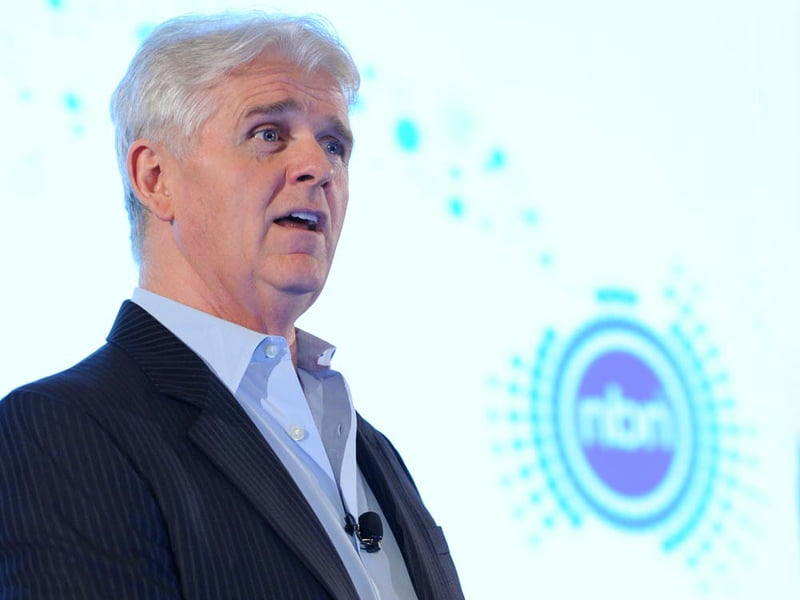I wish it were otherwise, but it is impossible to cover the innovation sector in Australia without occasionally writing about the National Broadband Network. The notion of a broadband ‘debate’ has been a bit of a nonsense since at least the 2010 election, hopelessly mired in ideology and profound toxicity.
But here we are in 2015. I suppose at last it is no longer a ‘debate’ and can finally be called a ‘roll-out’, albeit it one with Frankensteinian characteristics.
The release of the NBN Co’s strategic plan is an important marker for the project. Most telecom writers have marked it as the day the Coalition took responsibility for the roll-out – the point from which every bad that happens is this government’s fault.

In this regard, it is probably worth noting that whatever the current state of broadband is in Australia – whether you are in a city or in the regions – it is certainly better now than it would have been had the original 2007 Rudd vision/madness not been initiated way back when.
Which is to say the Rudd vision/madness (depending on your point of view) made broadband a frontline political issue at a time when no-one gave a crap about the internet, or ISPs, or even a competitive telco landscape. Of course, Tony Abbott learned this to his great cost when he narrowly lost at the 2010 poll, having taken an entirely empty-shirt of a policy to that election.
So let us rejoice that we have entered the mass roll-out phase of this government-owned national network, and that its targets and bandwidth objectives are first-world. So that’s the good news.
To the headline numbers, which are all about cost. In 2013, the Coalition was saying it could build its version of the NBN for $29.5 billion. By December of that year – after it has taken office and had better look at the books – it had revised that number upwards to $41 billion.
Yesterday that number was revised upwards again by up to $15 billion to a $56 billion. Actually NBN Co chief Bill Morrow put the total peak funding cost in a range at between $46 billion and $56 billion, depending on a number of variable risk factors.
Mr Morrow said his best estimate would put the cost somewhere in the middle of that range at about $49 billion. Regardless of where it falls in the spectrum – and history tells us it is likely to be at the upper end or beyond – it is an excruciating number.
The kindest view of this cost revision is that it is now based on better data. The original number ($29.5 billion) was a pre-election number. The $41 billion was the result of a fairly quick and dirty review taken immediately after the election, presumably when the adrenalin was still running high.
So when Mr Morrow talks about the possibility of revising that peak cost up by up to $15 billion, at least now an assumption can be made that it is the result of cold clinical research. (Also, Mr Turnbull’s modus operandi seems to be to set expectations low, and then drive to exceed these expectations. Which has worked, sort of.)
The reality though, is somewhat more alarming. While the strategic plan is clearly based on a more granular picture than was previously available to management, it makes clear that copper network issues remain an unfathomable issue.
Literally, they know parts of the copper network that will deliver FttN services are shitty. But they don’t yet know how shitty it is, or where the shitty bits are.
This adds to the project risks, and obviously adds to potential projects costs.
“The quality of this [copper] network is not fully known as there has been limited opportunity to evaluate the physical infrastructure at physical scale,” the 2016 corporate plan says. “However, it is known that there is significant work required to remove broadband blockers from the copper network.”
“If copper rehabilitation costs are prohibitively high in an area, [NBN Co] can choose alternative technologies to reduce costs,” it said, referring to pair-gain style electronic boxes that were introduced to the network in the fax era and have been the bane of broadband users ever since.
“If it means pulling in fibre or fixed-wireless towers, that’s what we will do. We do consider ourselves technology agnostic … [it’s about] getting it to every household as cheap and as fast as we can,” Bill Morrow said.
And of course, delivery is the key. It is a shame that the numbers NBN Co forecast still seem to be out in the NeverNever. The company is saying that nine million homes and businesses across the country will be ready to connect to the NBN service – and more than four million will have already signed up, by 2018.
These are bold numbers, and it is not as if they look any easier to achieve now than they did last week. The complexity of this project is immense, which, of course, is reflected in its cost.
Reflecting on ancient history on Monday, Mr Turnbull said the network build should have been done by a telco with experience in such construction. The creation of a government-owned startup to deliver a project of this scale and complexity was a disastrous policy.
He says the current NBN Co corporate plan reflects a remediation of this original problem. The Coalition, he said, could only work with the cards it was dealt. Which I took to mean he will continue to blame Labor for all broadband pain in Australia, regardless of what happens from here.
Do you know more? Contact James Riley via Email.

